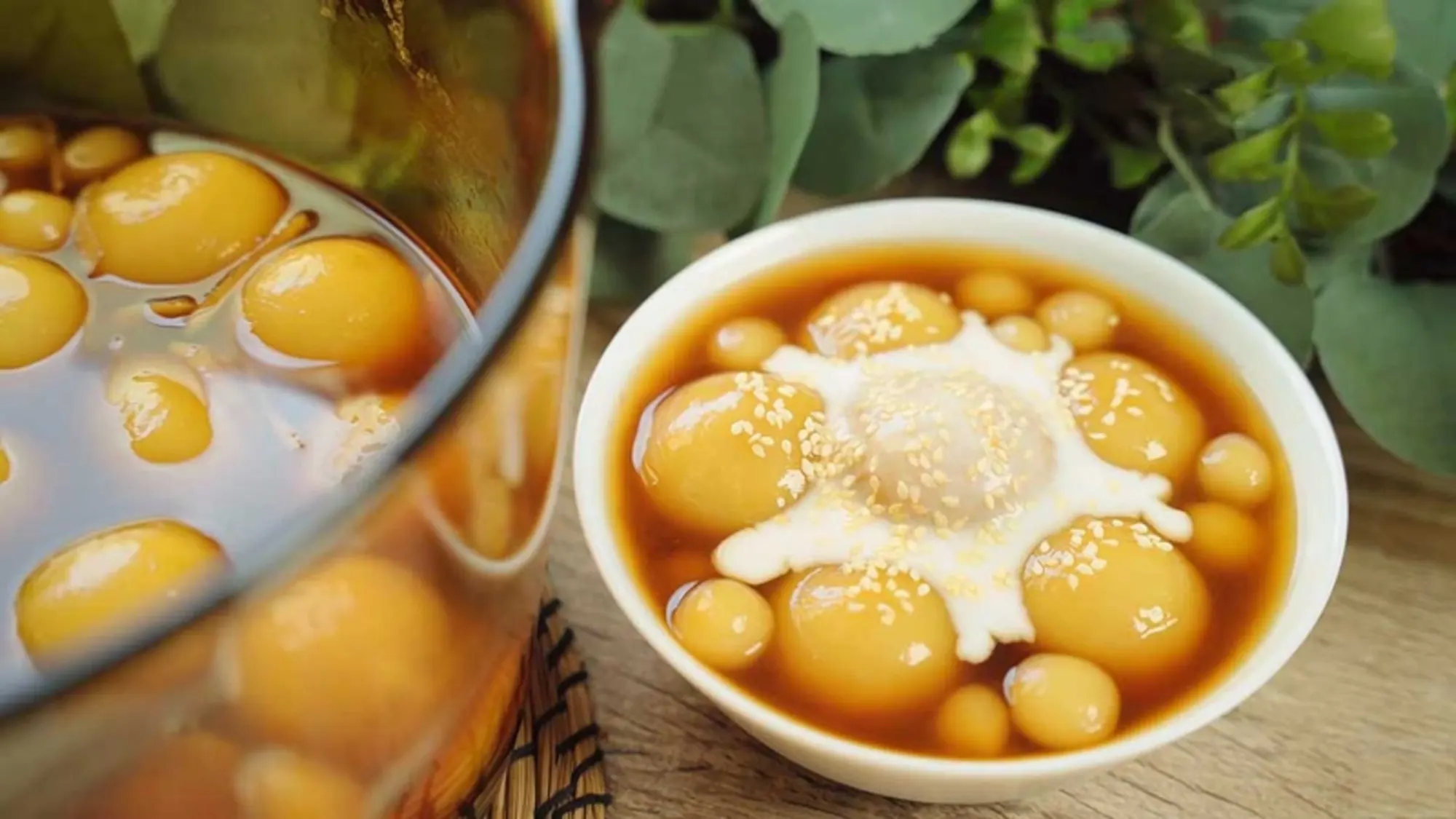
Banh Troi Nuoc
Sweet rice balls in ginger syrup.
Ingredients
- •Glutinous rice flour
- •Mung bean paste
- •Ginger
- •Sugar
- •Sesame seeds
Instructions
Make Dough
Form rice balls with filling
Cook
Boil in ginger syrup
Bánh Trôi Nước, also known as "floating rice balls" or "water cake," is a beloved Vietnamese dessert that features tender glutinous rice balls filled with sweet mung bean paste, served in a fragrant ginger syrup. These translucent white dumplings are not only delicious but also visually appealing, as they appear to "float" in the warm, golden syrup.
This traditional dessert holds cultural significance in Vietnam, particularly during Tết Hàn Thực (Cold Food Festival) which falls on the third day of the third lunar month. The name "Bánh Trôi" literally means "floating cake," referring to how these dumplings float to the surface when cooked.
The preparation begins with making a smooth dough from glutinous rice flour and water. The filling consists of cooked mung beans sweetened with sugar and flavored with vanilla. Small portions of dough are flattened, filled with the mung bean paste, and carefully shaped into perfect spheres. These balls are then cooked in boiling water until they float to the surface, indicating they're done.
While the classic version features mung bean filling, modern variations might include black sesame paste, peanuts, or even chocolate. Some regions add food coloring to create colorful variations, while others might infuse the ginger syrup with pandan leaves or other aromatics for additional flavor complexity.
In Vietnam, Bánh Trôi Nước is traditionally served warm in its ginger syrup and garnished with toasted sesame seeds. The dessert is particularly enjoyable during cool weather, when the warm ginger syrup provides a comforting heat. It's commonly found in street food stalls, traditional dessert shops, and is often prepared at home during festivals.
From a nutritional perspective, while this dessert is relatively low in fat, it is high in carbohydrates due to the glutinous rice flour and sugar content. The ginger component may aid digestion and provide anti-inflammatory benefits. Those with gluten sensitivities can enjoy this dessert as it's naturally gluten-free, though individuals with mung bean allergies should exercise caution. The dessert is best enjoyed in moderation as part of a balanced diet.
